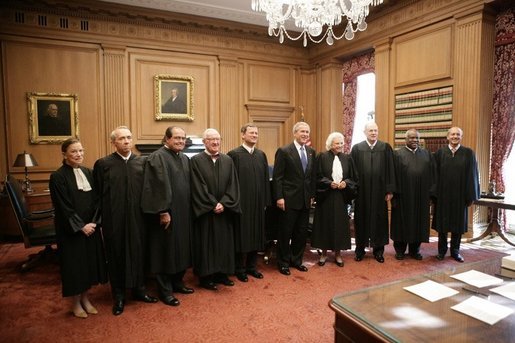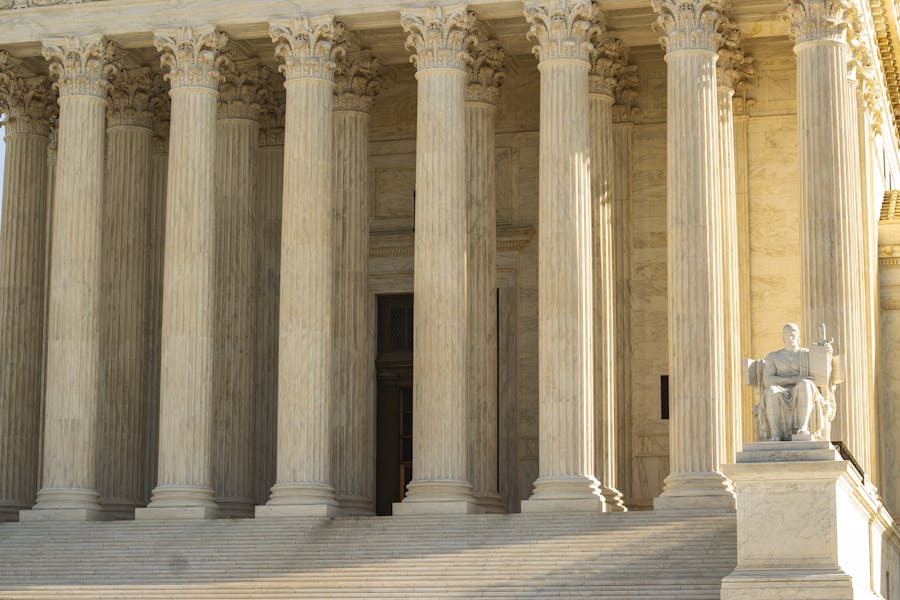The Associate Justices of the Supreme Court of the United States play an essential role in interpreting the Constitution and shaping American law. With a bench composed of nine justices, the Supreme Court serves as the highest court in the federal judiciary, addressing significant legal issues that impact the nation. This article explores the responsibilities, selection, and current composition of Associate Justices, offering insights into their influence on the legal system.
What is an Associate Justice of the Supreme Court of the United States?
An Associate Justice of the Supreme Court of the United States is one of the judges serving on the Supreme Court, the highest court in the federal judiciary. Each justice participates in adjudicating cases, interpreting laws, and making significant decisions that affect U.S. law and society. Associate Justices are appointed by the President and confirmed by the Senate, serving lifetime terms unless they choose to retire or are removed through impeachment.
Historical Context
The position of Associate Justice has evolved since the Supreme Court’s establishment in 1789. Initially, the court had six justices, but the number has varied over the years. The Judiciary Act of 1869 set the current number at nine, ensuring a diverse representation of legal thought.
Table 1: Historical Composition of the Supreme Court
| Year | Total Justices | Chief Justice | Notable Associate Justices |
|---|---|---|---|
| 1789 | 6 | John Jay | John Rutledge, William Cushing |
| 1869 | 9 | Salmon P. Chase | David Davis, Samuel F. Miller |
| 1937 | 9 | Charles Evans Hughes | Hugo Black, Felix Frankfurter |
| 2023 | 9 | John Roberts | Clarence Thomas, Sonia Sotomayor |
Appointment Process
The appointment of an Associate Justice involves a rigorous process. The President nominates a candidate, typically after consulting with senators and considering recommendations. Following the nomination, the Senate Judiciary Committee conducts hearings where the nominee answers questions about their judicial philosophy and past rulings. The full Senate then votes on the nomination; a simple majority is required for confirmation.
Recent Appointments
The most recent justices appointed include:
- Neil Gorsuch (nominated by Donald Trump in 2017)
- Brett Kavanaugh (nominated by Donald Trump in 2018)
- Amy Coney Barrett (nominated by Donald Trump in 2020)
These appointments have significantly shaped the court’s ideological balance and have led to critical rulings on various legal issues.
Current Composition of the Supreme Court
As of 2023, the Supreme Court comprises the following justices:
- John Roberts (Chief Justice)
- Clarence Thomas
- Samuel Alito
- Sonia Sotomayor
- Elena Kagan
- Neil Gorsuch
- Brett Kavanaugh
- Amy Coney Barrett
- Ketanji Brown Jackson
Table 2: Current Justices and Their Appointing Presidents
| Justice | Appointed By | Year of Appointment |
|---|---|---|
| John Roberts | George W. Bush | 2005 |
| Clarence Thomas | George H.W. Bush | 1991 |
| Samuel Alito | George W. Bush | 2006 |
| Sonia Sotomayor | Barack Obama | 2009 |
| Elena Kagan | Barack Obama | 2010 |
| Neil Gorsuch | Donald Trump | 2017 |
| Brett Kavanaugh | Donald Trump | 2018 |
| Amy Coney Barrett | Donald Trump | 2020 |
| Ketanji Brown Jackson | Joe Biden | 2021 |

Responsibilities and Influence
The primary responsibilities of Associate Justices include:
- Hearing Cases: Justices participate in oral arguments, deliberations, and writing opinions on cases that reach the court.
- Interpreting the Constitution: They provide interpretations that affect civil rights, federal regulations, and criminal justice.
- Setting Precedents: Supreme Court decisions serve as binding precedents for lower courts, shaping the landscape of American law.
- Dissenting Opinions: Justices may express dissenting views, influencing future legal arguments and discussions.
The justices’ rulings can have far-reaching societal implications. For instance, decisions on abortion rights, healthcare legislation, and voting rights continue to ignite national debates.
Recent Landmark Decisions
A few landmark decisions that have emerged in recent years include:
- Dobbs v. Jackson Women’s Health Organization (2022): This case overturned Roe v. Wade, significantly changing abortion laws across the United States.
- Brnovich v. Democratic National Committee (2021): A ruling that upheld Arizona’s voting law, impacting voting rights nationwide.
- Bostock v. Clayton County (2020): The court ruled that Title VII of the Civil Rights Act protects employees from discrimination based on sexual orientation or gender identity.
The Future of the Supreme Court
As the Supreme Court faces growing scrutiny from the public and lawmakers, discussions about judicial reform and the balance of power continue. The increasing polarization in the political landscape influences perceptions of the court, with calls for reforms like term limits and changes to the confirmation process.
Potential Reforms
Several proposals aim to alter the court’s structure or process, including:
- Term Limits for Justices: Limiting justices to a fixed term could introduce fresh perspectives periodically.
- Court Packing: Some advocate expanding the number of justices to dilute the ideological influence of any single administration’s appointments.
- Increased Transparency: Efforts to make the court’s proceedings and decision-making more transparent have gained traction, aiming to restore public trust.
Conclusion
The role of Associate Justices in the Supreme Court is pivotal in shaping the judicial landscape of the United States. Their decisions resonate through generations, influencing laws and societal norms. Understanding the current composition, appointment process, and responsibilities of these justices is vital as America navigates its legal and ethical landscapes. As the court continues to face challenges and scrutiny, its capacity to adapt and respond to societal needs remains crucial.

